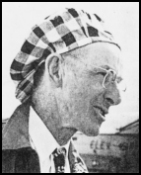
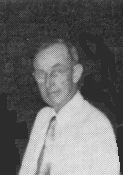
1887-1960 |
 |
 |
Wright Flyer, 1959 |
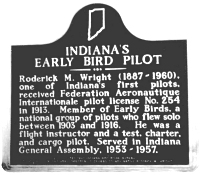 |
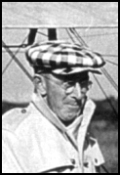 |
UNITED PRESS PHOTO |
|
Submitted as Part of the Marker Application, 1996 Roderick M. Wright was born March 24, 1887 in the house built by his grandfather in 1863. He passed away in the same house on October 13, 1960. Rod Wright learned to fly on July 16, 1913 at the Wright Brothers School at Dayton, Ohio with Oscar Brindly as his instructor. On July 28, 1913, Grover Cleveland Loening as the observer passed Rod Wright on his flying ability. Thus the Aero Club of America issued him the F.A.I. License No. 254 In 1915, Orville Wright asked Rod Wright to be one of his instructors at his school in Dayton, Ohio. While he was an instructor, he taught Edward Stinson, who was to be the founder and owner of the Stinson Airplane Company, and Roy Brown, a Canadian, who shot down the German Ace Richthofen in World War I. Mr. Wright was the test pilot for the Sturtevant Company at Boston, Mass. in 1917-1918. He was a test pilot for the War Department in 1917-1918. While there he flew monoplanes, biplanes and triplanes. While there he also flew two planes at the same time, using radio controls. He was the first man to accomplish that feat. In 1929- 1930 Rod was test pilot for the Stinson Company. During his flying experiences he has flown around 500 different planes. In 1929-1930 he held ratings in five different weight and power categories. He flew for the Ford Motor Company in 1931 and in 1932 flew in the Ford Trimotor. He worked for the Hudson Motor Co. and put a Hudson Terraplane car motor in a Curtiss Robin airplane to promote the Hudson Cars. During World War II he had the contract for drop testing parachutes made by the Reliance Manufacturing Company in Washington, Indiana. With 5,500 takeoffs and landings, some 11,000 parachutes were tested on his farm. When he was 67 years old, he flew the fastest plane in his career, a T-33 jet. Roderick R. Wright, of Washington, Indiana |
|
Sprague Library Harvey Mudd College. "This web site is designed to show what the contents of Sprague Library has to offer in Carruthers Special Collection on aviation history. Specifically, this site deals with the portion of the collection devoted to photographs, posters, artists drawings and media publications. The approximately 4800 books in the Carruthers aviation collection are already in the on-line library catalog. The topics mentioned in this site are limited to the subjects available in this particular collection of approximately 445 Photos; 400 documents, 115 posters, lithographs/engravings; . They represent several periods of aviation history of ballooning since 1783, and heavier-than-air vehicles since 1900 and the people and events which made that history." along with a number of other pioneers, Just click on: Roderick R. Wright You will find him pictured in the fourth picture down the page. I heartily recommend that you plan some time to enjoy the whole site. Just click on; Aviation Special Collections You will find a wealth of fascinating materials available online. |
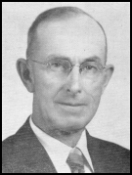 |
|
Rod had learned to fly at Wright Brothers School at Dayton, Ohio, soloing on July 28, 1913 with Grover Loening as his observer and was issued FAI License No. 254. After instructing at the Wright School, he flew for the Sturdevant Company; was a civilian test pilot for the Army at Langley Field and the Stinson Company; flew the Ford Freight Line, the original "Terraplane" and some exhibition flying, all of which gave him 20 years of professional flying some 200 kinds of planes. He returned to the farm at Washington which he took a great pride in saying only the Wrights and the Indians had ever owned. World War II brought him another stint into the flying field with contracts to drop-test parachutes. Some 5,000 chutes were tested on the farm under those contracts. He served two terms in the Indiana House of Representatives and was on the commission to extablish the Wilbur Wright Memorial at the original home site near Millville, Indiana. November 1960, Number 64 |


|